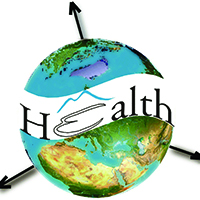Editorials
28 October 2021
Vol. 16 No. 2 (2021)
The changing risk of vector-borne diseases: Global satellite remote sensing and geospatial surveillance at the forefront

Publisher's note
All claims expressed in this article are solely those of the authors and do not necessarily represent those of their affiliated organizations, or those of the publisher, the editors and the reviewers. Any product that may be evaluated in this article or claim that may be made by its manufacturer is not guaranteed or endorsed by the publisher.
All claims expressed in this article are solely those of the authors and do not necessarily represent those of their affiliated organizations, or those of the publisher, the editors and the reviewers. Any product that may be evaluated in this article or claim that may be made by its manufacturer is not guaranteed or endorsed by the publisher.
2644
Views
874
Downloads
28
HTML
Authors
Ingerod, Brastad, Sweden.
National Aeronautics Space Administration (NASA), Huntsville, AL, United States.
Department of Pathobiological Sciences, Louisiana State University, Baton Rouge, LA, United States.
Not available
Asghar N, Petersson M, Johansson M, Dinnetz P, 2016. Local landscape effects on population dynamics of Ixodes ricinus. Geospat Health 11:487. DOI: https://doi.org/10.4081/gh.2016.487
Asner GP, Martin RE, Ford AJ, Metcalfe DJ, Liddell MJ, 2009. Leaf Chemical and Spectral Diversity in Australian Tropical Forests. Ecol Appl 19:236-53. DOI: https://doi.org/10.1890/08-0023.1
Banks WE, 2017.The application of ecological niche modeling methods to archaeological data in order to examine culture environment relationships and cultural trajectories. Quaterinaire 28:271-6. DOI: https://doi.org/10.4000/quaternaire.7966
Bernal J, Gonzalez D, 1993. Experimental assessment of a degreeday model for predicting the development of parasites in the field. J Appl Ent 116:459-66. DOI: https://doi.org/10.1111/j.1439-0418.1993.tb01222.x
Bond G, Kromer B, Beer J, Muscheler R, Evans MN, Showers W, Hoffmann S, Lotti-Bond R, Hajdas I, Bonani G, 2001. Persistent solar influence on North Atlantic climate during the Holocene. Science 294:2130-6. DOI: https://doi.org/10.1126/science.1065680
Bonhomme R, 2000. Bases and limits to using ‘degree.day’ units. Eur J Agron 13:1-10. DOI: https://doi.org/10.1016/S1161-0301(00)00058-7
Brown JL, Hill DJ, Dolan AM, Carnaval AC, Haywood AM, 2018. PaleoClim, high spatial resolution paleoclimate surfaces for global land areas. Sci Data 5:180254. DOI: https://doi.org/10.1038/sdata.2018.254
Fick SE, Hijmans RJ, 2017. Worldclim 2: New 1-km spatial resolution climate surfaces for global land areas. Int J Climatol 37:4302-15. DOI: https://doi.org/10.1002/joc.5086
Hijmans RJ, Cameron SE, Parra JL, Jones PG, Jarvis A, 2005. Very high resolution interpolated climate surfaces for global land areas. Available from the WorldClim data website: http://www.worldclim.org/version1 DOI: https://doi.org/10.1002/joc.1276
IPCC, 2021. In: Masson-Delmotte V, Zhai P, Pirani A, Connors SL, Péan C, et al., (Eds.), Climate Change 2021: The physical science basis. Contribution of Working Group I to the Sixth Assessment Report of the Intergovernmental Panel on Climate Change. Cambridge University Press, Cambridge, UK.
Khormi HM, Kumar L, 2016. Future malaria spatial pattern based on the potential global warming impact in South and Southeast Asia. Geospat Health 11:416. DOI: https://doi.org/10.4081/gh.2016.416
Khodkar I, Feizhadad MH, Tavalla M, 2018. Paleoparasitology in Iran: a review. Infez Med 26:396-402.
Luvall JC, Lieberman D, Lieberman M, Hartshorn GS, Peralta R, 1990. Estimation of tropical forest canopy temperatures, thermal response numbers, and evapotranspiration using an aircraft-based thermal sensor. Photogramm Eng Remote Sensing 56:1393-401.
Miyahara H, Tokanai F, Moriya T, Takeyama M, Sakurai H, Horiuchi K, Hotta H, 2021. Gradual onset of the Maunder Minimum revealed by high-precision carbon-14 analyses. Sci Rep 11:5482. DOI: https://doi.org/10.1038/s41598-021-84830-5
Maunder EW, 1894. A prolonged sunspot minimum. Knowledge 17:173-6.
Nix HA, 1986. A biogeographic analysis of Australian ela-pidsnakes. In: Longmore R (Ed.), Atlas of elapid snakes of Australia: Australian Flora and Fauna series no. 7. Bureau of Flora and Fauna, Canberra, Australia, pp. 4-15.
Pavlovskii EN, 1945. The ecological parasitology. J Gen Biol 6:65-92.
Malone JB, Bergquist R, Martins M, Luvall JC, 2019. Use of geospatial surveillance and response systems for vector-borne diseases in the elimination phase. Trop Med Infect Dis 4:pii:15. DOI: https://doi.org/10.3390/tropicalmed4010015
Quattrochi DA, Luvall JC, 2014. Thermal infrared remote sensing for analysis of landscape ecological processes: current insights and trends; Chapter 3. In: Weng Q (Ed.), Scale issues in remote sensing. Wiley Blackwell, Hoboken, NJ, USA, pp. 34-60. DOI: https://doi.org/10.1002/9781118801628.ch03
Stensgaard AS, Vounatsou P, Sengupta ME, Utzinger J, 2019. Schistosomes, snails and climate change: Current trends and future expectations. Acta Trop 190:257-68. DOI: https://doi.org/10.1016/j.actatropica.2018.09.013
Thompson DR, Schimel DS, Poulter B, Brosnan I, Hook SJ, Green RO, Glenn N, Guild L, Henn C, Cawse-Nicholson K, Kokaly R, Lee C, Luvall J, Miller CE, Nastal CE, Pavlick R, Philips B, Schneider F, Schollaert Uz S, 2020. NASA’s surface biology and geology concept study: status and next steps. pp. 3269-3271 in IGARSS 2020-2020 IEEE International Geoscience and Remote Sensing Symposium. DOI: https://doi.org/10.1109/IGARSS39084.2020.9323295
Valencia-López N, Malone JB, Carmona CG, Velásquez LE, 2012. Climate-based risk models for Fasciola hepatica in Colombia. Geospat Health 6:S67-85. DOI: https://doi.org/10.4081/gh.2012.125
Zhou XN, Yang GJ, Yang K, Wang XH, Hong QB, Sun LP, Malone JB, Kristensen TK, Bergquist NR, Utzinger J, 2008. Potential impact of climate change on schistosomiasis transmission in China. Am J Trop Med Hyg 78:188-94. DOI: https://doi.org/10.4269/ajtmh.2008.78.188
How to Cite
The changing risk of vector-borne diseases: Global satellite remote sensing and geospatial surveillance at the forefront. (2021). Geospatial Health, 16(2). https://doi.org/10.4081/gh.2021.1047
PAGEPress has chosen to apply the Creative Commons Attribution NonCommercial 4.0 International License (CC BY-NC 4.0) to all manuscripts to be published.













